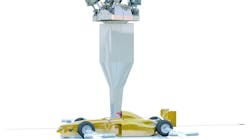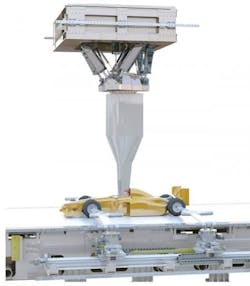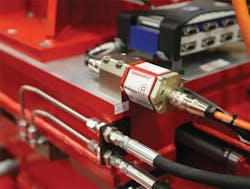|
Resources: |
Inside the complex, fans generate air speeds as high 180mph while ceiling-mounted struts suspend a test car and point it into the wind at various angles to simulate straightaways and turns. The car hovers just above a thin stainless belt that glides over high-pressure air bearings at speeds to match those simulated by the fans. The moving belt eliminates the boundary layer of air common in fixedfloor wind tunnels. This relatively stagnant air tends to give bad data for low-ground-clearance motorsport vehicles.
Accurate test results help manufacturers identify subtle causes of drag and crosswind instability, which then lets them make changes to boost stability, efficiency, and downforce.
Six R-Series Temposonics magnetostrictive sensors from the sensors division of MTS, Cary, N.C., monitor the placement of everything in the tunnel. The sensors mounted to the ceiling track the race car’s position above the belt. Feedback from the sensors help position the vehicle to within 1.5 mm of the moving belt. Vertical positioning accuracy is within ±40μm, and repeatability is within 6μm.Sensors in the tunnel also measure miniscule changes in vehicle lift, drag, and side forces during tight cornering. Adjustments based on these results improve the downforce ratio between the test car’s four tires. A seventh sensor under the belt controls the angle of the road, altering the direction from which the wind it generates hits the vehicle.
All the sensors use a flexible housing that can measure linear position along a curve, letting them handle applications that usually employ rotary sensors. These flexible sensors are said to be easier to install and use than traditional rotary sensors with antibacklash gearing.


